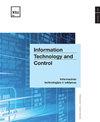Multidisciplinary Performance Enhancement on a Fixed-wing Unmanned Aerial Vehicle via Simultaneous Morphing Wing and Control System Design
IF 2
4区 计算机科学
Q3 AUTOMATION & CONTROL SYSTEMS
引用次数: 0
Abstract
An aerial vehicle design process usually aims to maximize performance in a specific flight phase regarding a particular topic such as aerodynamics, flight qualities, or control. This paper proposes a multidisciplinary enhancement both in aerodynamics and longitudinal autonomous flight performance (LAFP) via modern simultaneous design methodology conducted with a novel morphing idea. In this regard, the main wing of a fixed-wing unmanned aerial vehicle (UAV) is redesigned with wingtips capable of altering its taper ratio which results in a semi-tapered planform. The dynamic model of morphing aircraft is constituted from data obtained by numerical and analytical approaches for a number of morphing scenarios. The LAFP is identified as the sum of trajectory tracking parameters which are rise time, settling time, and maximum overshoot, while aerodynamic performance is the lift-to-drag ratio. A hierarchically structured control system is designed and the proportional-integral-differential (PID) controller coefficients and the taper ratio of the morphing wingtip are optimized via the Simultaneous Perturbation Stochastic Ap-proximation (SPSA) algorithm. The k-nearest neighbor (k-NN) machine learning algorithm is also conducted to expand the data limited within the investigated range of morphing scenarios so as to have higher accuracy in optimization. Finally, flight simulations of the morphing UAV with optimal wing and control system design are carried out, closed-loop responses are examined in the presence of the von-Karman turbulence model, and the obtained satisfactory results are presented for both disciplines.通过同步变形机翼和控制系统设计提高固定翼无人飞行器的多学科性能
航空飞行器的设计过程通常旨在最大限度地提高特定飞行阶段的性能,涉及空气动力学、飞行品质或控制等特定主题。本文提出了一种通过现代同步设计方法,采用新颖的变形理念,同时提高空气动力学和纵向自主飞行性能(LAFP)的多学科方法。在这方面,对固定翼无人飞行器(UAV)的主翼进行了重新设计,翼尖能够改变其锥形比,从而形成半锥形平面。变形飞机的动态模型是通过数值和分析方法获得的一些变形方案的数据建立的。LAFP 被确定为上升时间、稳定时间和最大过冲等轨迹跟踪参数的总和,而气动性能则是升阻比。设计了一个分层结构控制系统,并通过同步扰动随机拟合(SPSA)算法优化了比例-积分-微分(PID)控制器系数和变形翼尖的锥度比。此外,还采用了 k 近邻(k-NN)机器学习算法,以扩大所研究的变形场景范围内的数据限制,从而提高优化的准确性。最后,对采用最佳机翼和控制系统设计的变形无人机进行了飞行模拟,并在 von-Karman 湍流模型存在的情况下对闭环响应进行了检验,结果令人满意。
本文章由计算机程序翻译,如有差异,请以英文原文为准。
求助全文
约1分钟内获得全文
求助全文
来源期刊

Information Technology and Control
工程技术-计算机:人工智能
CiteScore
2.70
自引率
9.10%
发文量
36
审稿时长
12 months
期刊介绍:
Periodical journal covers a wide field of computer science and control systems related problems including:
-Software and hardware engineering;
-Management systems engineering;
-Information systems and databases;
-Embedded systems;
-Physical systems modelling and application;
-Computer networks and cloud computing;
-Data visualization;
-Human-computer interface;
-Computer graphics, visual analytics, and multimedia systems.
 求助内容:
求助内容: 应助结果提醒方式:
应助结果提醒方式:


